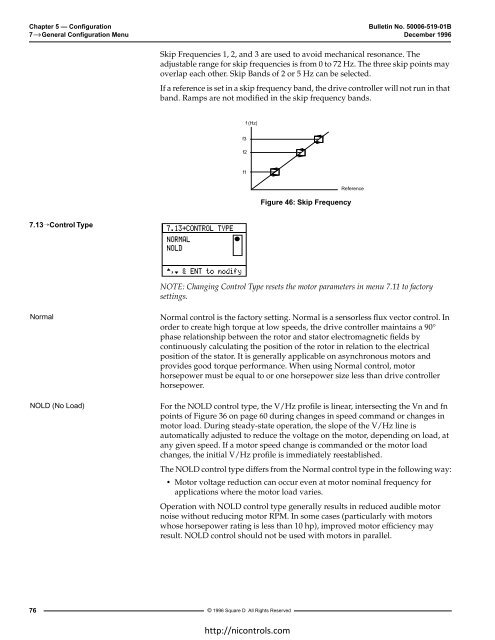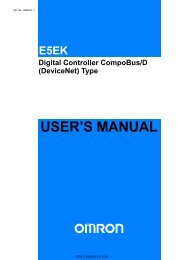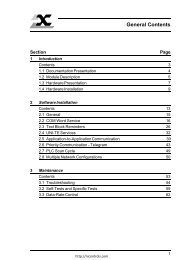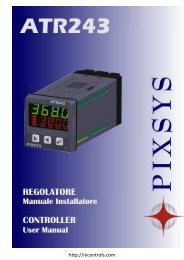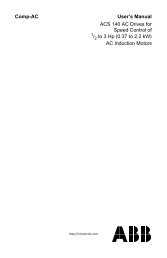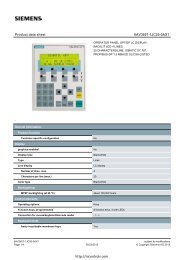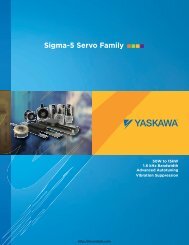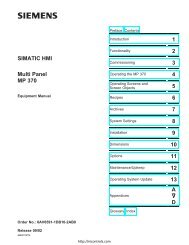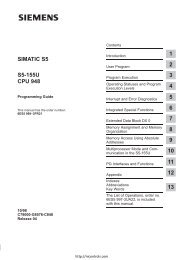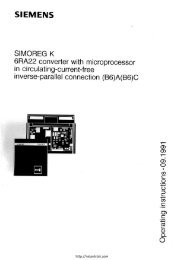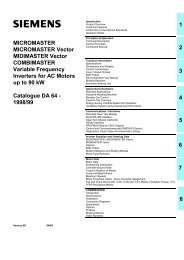Telemecanique Altivar 56 manual - Northern Industrial
Telemecanique Altivar 56 manual - Northern Industrial
Telemecanique Altivar 56 manual - Northern Industrial
Create successful ePaper yourself
Turn your PDF publications into a flip-book with our unique Google optimized e-Paper software.
Chapter 5 — ConfigurationBulletin No. 50006-519-01B7 →General Configuration Menu December 1996Skip Frequencies 1, 2, and 3 are used to avoid mechanical resonance. Theadjustable range for skip frequencies is from 0 to 72 Hz. The three skip points mayoverlap each other. Skip Bands of 2 or 5 Hz can be selected.If a reference is set in a skip frequency band, the drive controller will not run in thatband. Ramps are not modified in the skip frequency bands.f (Hz)f3f2f1Figure 46: Skip FrequencyReference7.13→Control Type7.13‘CONTROL TYPENORMALNOLD,† & ENT to modifyNOTE: Changing Control Type resets the motor parameters in menu 7.11 to factorysettings.NormalNOLD (No Load)Normal control is the factory setting. Normal is a sensorless flux vector control. Inorder to create high torque at low speeds, the drive controller maintains a 90°phase relationship between the rotor and stator electromagnetic fields bycontinuously calculating the position of the rotor in relation to the electricalposition of the stator. It is generally applicable on asynchronous motors andprovides good torque performance. When using Normal control, motorhorsepower must be equal to or one horsepower size less than drive controllerhorsepower.For the NOLD control type, the V/Hz profile is linear, intersecting the Vn and fnpoints of Figure 36 on page 60 during changes in speed command or changes inmotor load. During steady-state operation, the slope of the V/Hz line isautomatically adjusted to reduce the voltage on the motor, depending on load, atany given speed. If a motor speed change is commanded or the motor loadchanges, the initial V/Hz profile is immediately reestablished.The NOLD control type differs from the Normal control type in the following way:• Motor voltage reduction can occur even at motor nominal frequency forapplications where the motor load varies.Operation with NOLD control type generally results in reduced audible motornoise without reducing motor RPM. In some cases (particularly with motorswhose horsepower rating is less than 10 hp), improved motor efficiency mayresult. NOLD control should not be used with motors in parallel.76 © 1996 Square D All Rights Reservedηττπ://νιχοντρολσ.χοm


